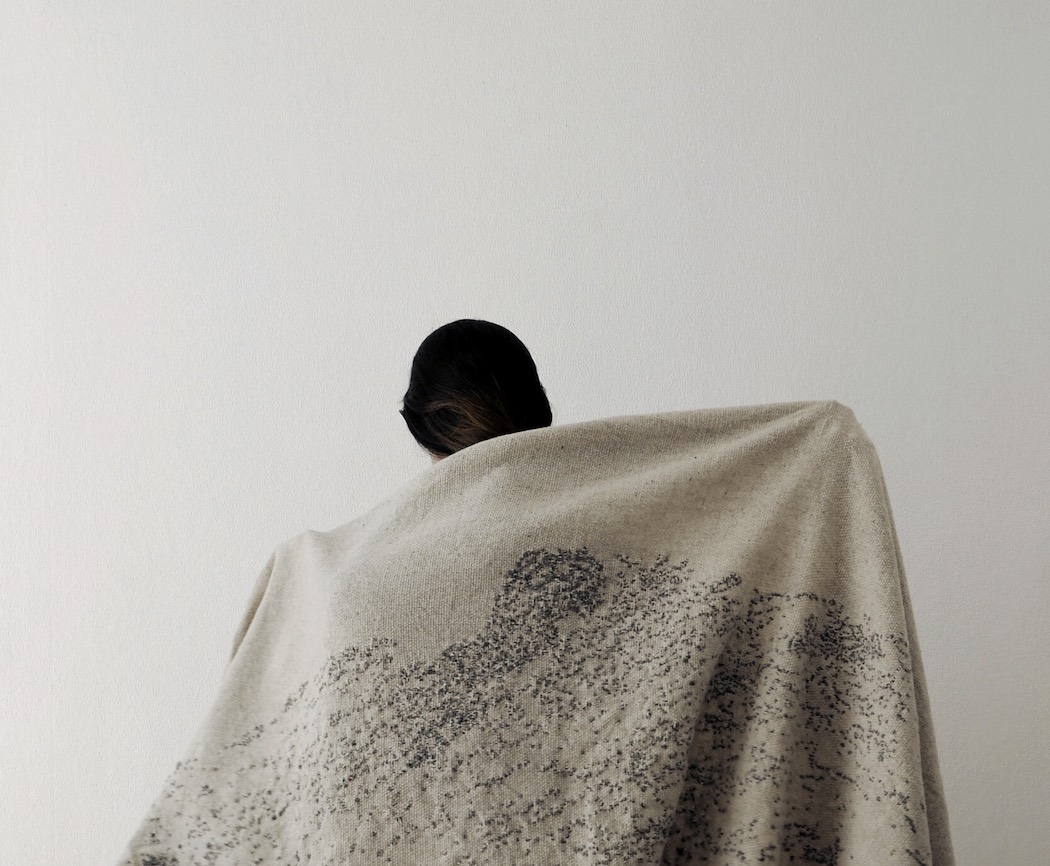
Interview
The Instruction within the Construction: Interview with Andrea Bores
by Sofía Ortiz
"I want to understand how everything is constructed: what are the patterns underneath the organic matter"
Reading time
9 min
Andrea Bores has a lot of earth in her personality. This might seem like an obvious observation for those who know her work—the first pieces I knew by her were, precisely, fabrics buried in the earth—but I feel it everywhere in her person. Even arriving at her house reminded me of the terrestrial: we walk through entangled corridors, as though they were architectural viscera crisscrossed by plants and stairs, until we reach a cool terrace where we sit down to drink coffee and talk.
Our conversation confirms my first intuition: we have a lot in common. We both teach, we both love plants, and we both have a complicated relationship with obedience. Her work gives me the feeling of something I recognize, even though I’ve never seen it before. I believe that this feeling—that something is heartbreakingly familiar, despite being totally unknown—is the event horizon of her work, the central point around which everything revolves. Andrea questions the landscape shared by organic matter: that is, she explores the ground shared by humans, mountains, protons, and galaxies. It’s curious that she began her training as a mechanical engineer. More than anything else, I feel her to be a witch, or more specifically a channel through which information flows—like the girls of the oracle of Delphi or a storytelling troubadour (“sing through me, muse…”)—so that nature assembles itself. Andrea creates the conditions so that the materials—charcoal, fabric, natural dyes—can express their underlying configuration, so that their arrangement reveals the intrinsic constructions of the natural world.
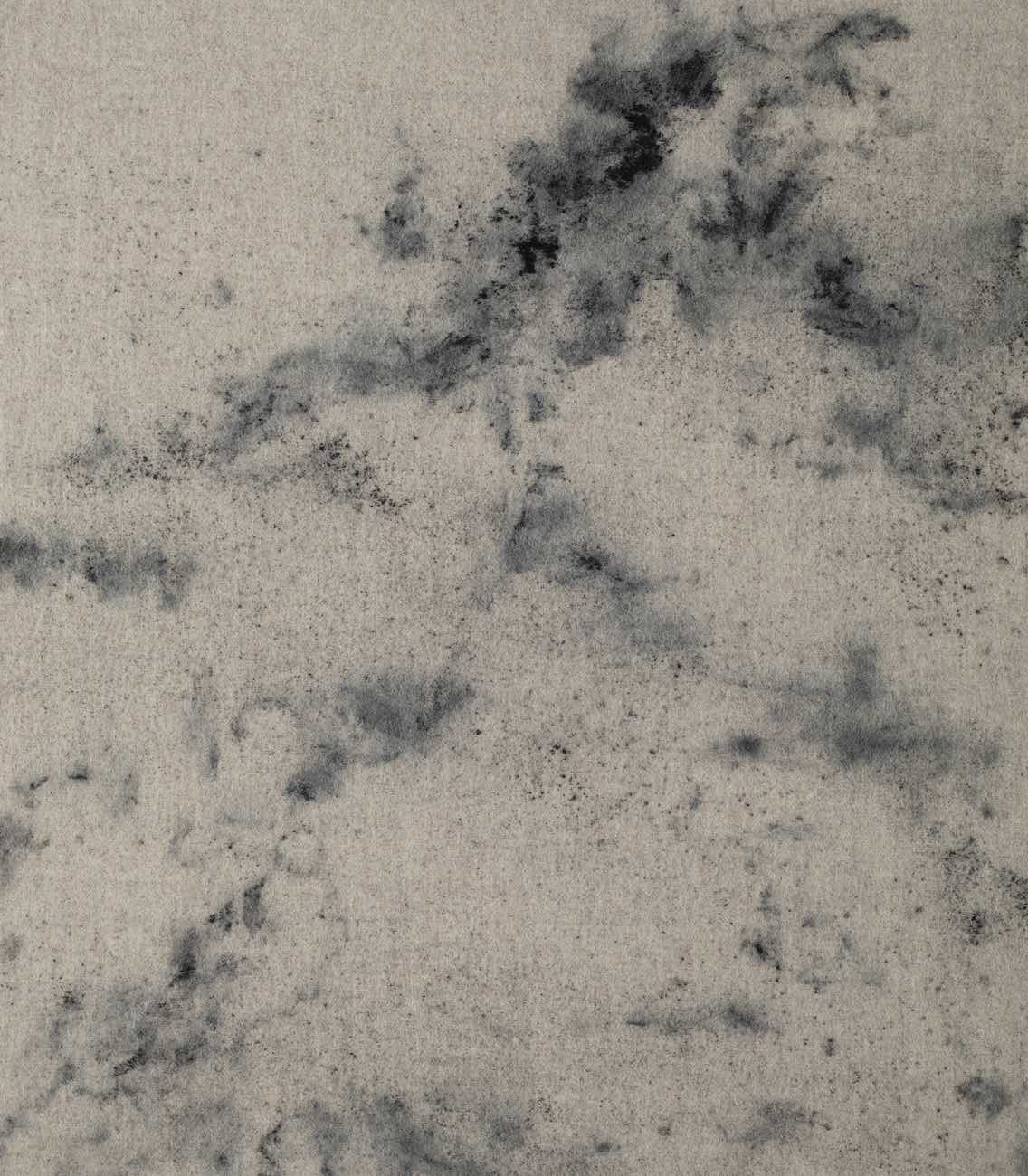
Andrea Bores: I want to understand how everything is constructed: what are the patterns underneath the organic matter, as though there were an instruction within the construction. It’s an idea very close to physics: understanding a series of instructions that determine the construction of the universe.
Sofía Ortiz: Do you think it exists? That is, instructions for everything?
AB: There’s evidence that they do exist, for example, in self-similarity.
Let’s pause at the concept of self-similarity. It’s not the first time that I come across this idea or find artists excited about it. Perhaps it’s a commonplace, a truism à la Jenny Holzer, a site to which all nature-loving artists arrive. Self-similarity is the repetition of forms at different scales within a system. It’s the inherent interconnectedness of those complex systems that are made flesh and manifested in matter: the orbit of an electron = the orbit of a planet, the bifurcation of the veins of a forearm = the aerial view of a river and its beds, a pine tree seen from above = the geometry of a snowflake. It’s an operatic and majestic connection that for a moment reveals a cosmic harmony, a possibly calibrated universe.
Nevertheless, there’s also whim.
AB: There’s always an error; there’s always randomness. Even in the experimental models of physics, the error in the formulas must be considered. Like in a tree: you know what shape it’s going to have, how it’s going to grow—it can’t be the shape opposite to the one that’s “programmed” inside a seed—but at the same time you can’t predict exactly where the leaves are going to be, or which way the trunk is going to lean.
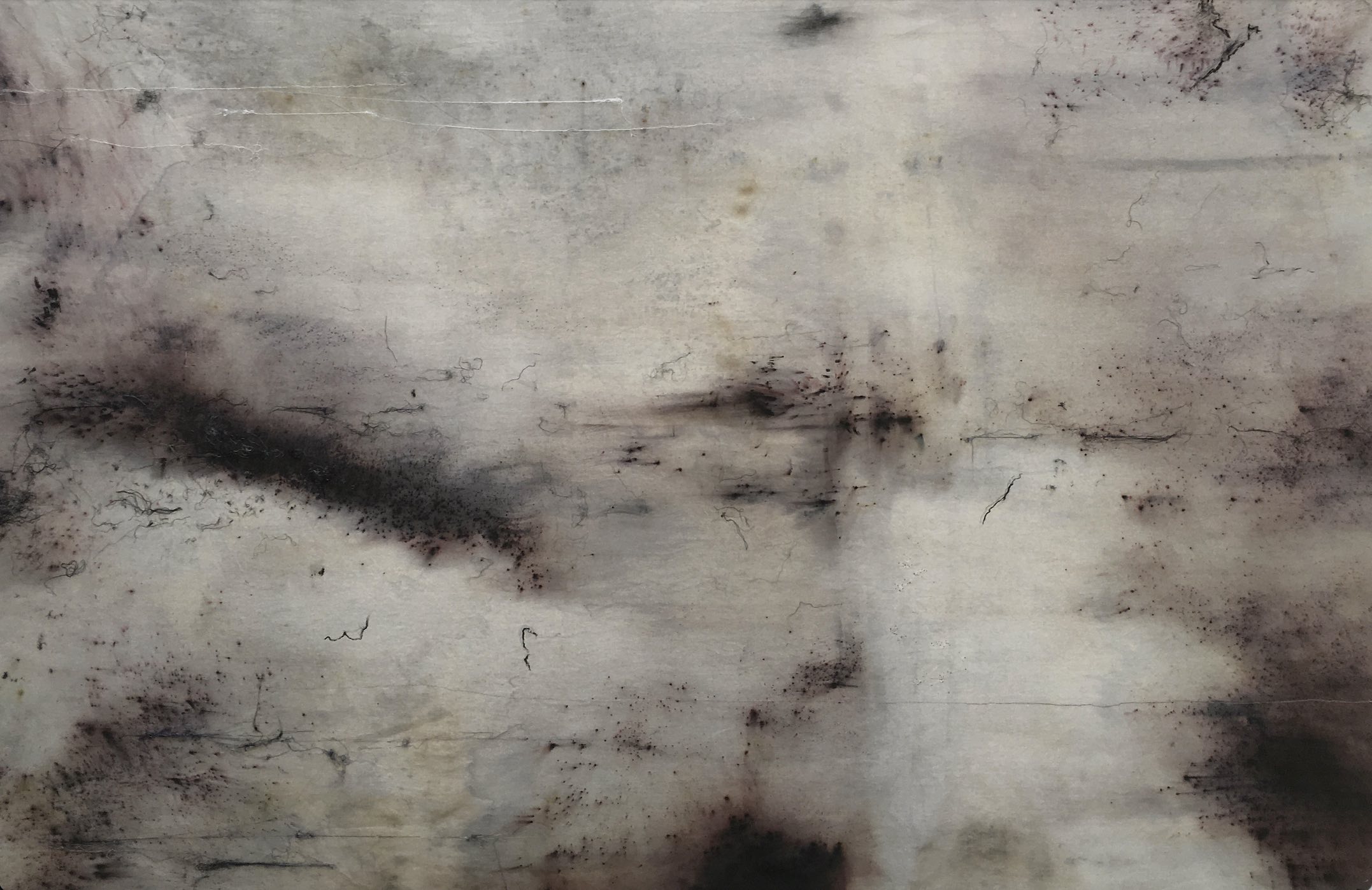
Andrea’s work has a lot to do with control and with lack of control. She tends to stability, to order, to the earth—and, for this reason, she has had to seek instability in order to return to balance. She tells me about two important moments in which instability broke into her life: upon ending a long-term relationship—twelve years!—and when she decided to leave engineering in order to study fashion. There is also the self-similarity between work and life.
AB: I realized that in my life there were too many structures and there was nothing to challenge me. I felt I had to move, but I didn’t know where. My boyfriend at that time was studying at a design school, and I would pass through these classrooms with looms when I went to visit him. I was very moved by the idea of textiles, of the loom; I was very curious about that world, which seemed very alien to me. I started with textiles, looking to portray the landscape with embroidery. Each stitch is like a pixel, a piece of instruction, the smallest piece for construction. I was looking for a lot of control, but at the same time I realized that those same compositions—the shape of a landscape—occurred by themselves if I left the fabric submerged in the natural dye.
In her most recent pieces she attaches pulverized natural charcoal to sheets of paper. The dust disperses in small explosions and eddies that generate “abstractions”: the instruction of the total form is contained within the will of the material. Nevertheless, Andrea reinserts control when selecting viewpoints within large pieces. In this sense, the process of these works is close to photography. It’s funny how Andrea’s work doesn’t fit comfortably into one category; her pieces are not distinctly painting, drawing, or design.
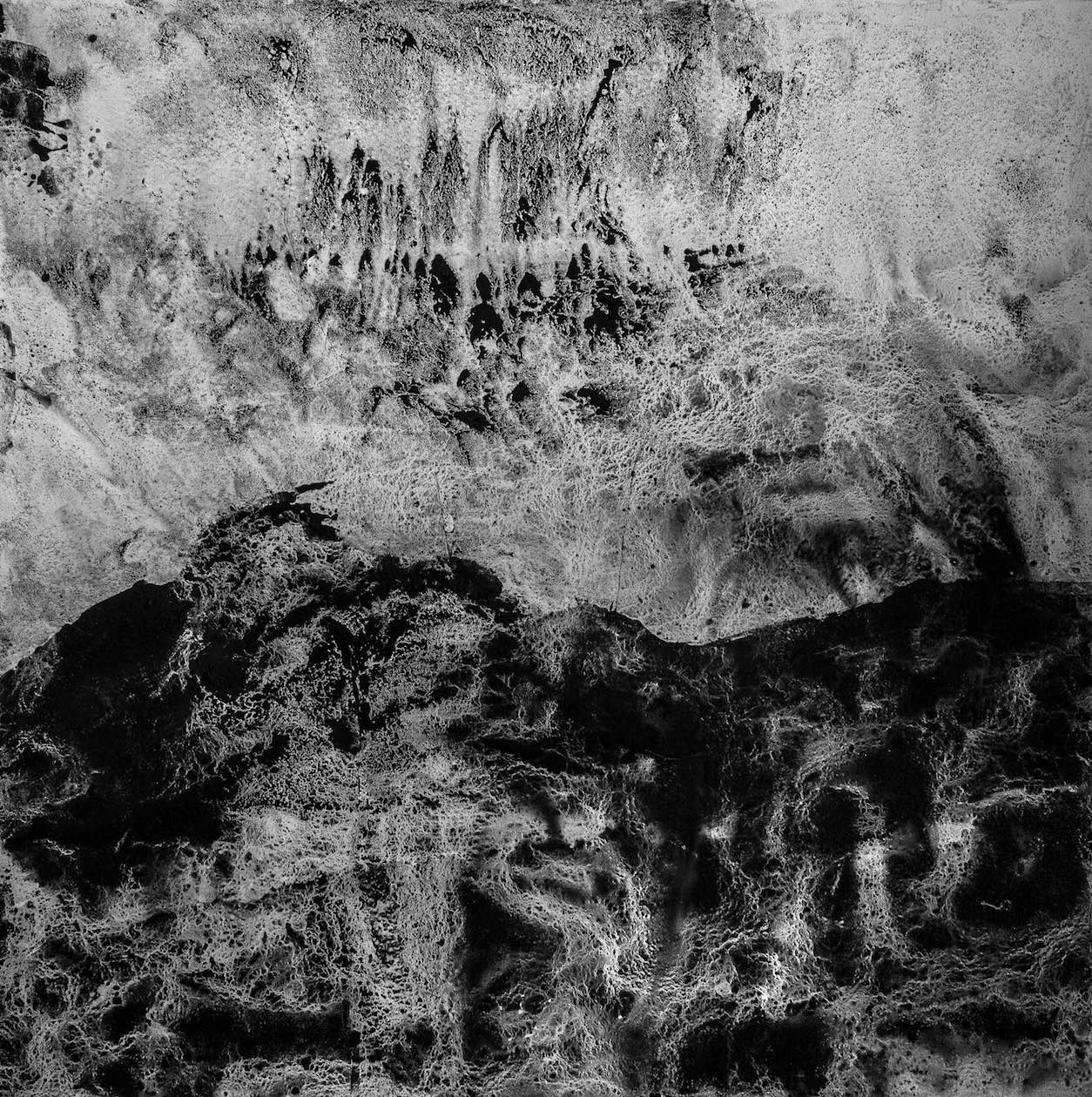
She shows me a small painting of a natural charcoal; light peers through the trees and dapples the work’s rough surface. We chew on an idea that greatly interests both of us: that the category is a human tool, an essential one, but that the category should not be confused with the thing in itself. In nature nothing is fixed; stones, bugs, thermodynamics—everything is a process, a state of constant flux. But we humans are bad at holding paradoxes in our heads, for example that something can be more than one thing at the same time. We need to impose limits on things in order to understand them, to give them order, and to categorize them.
AB. Categories are not boxes, but permeable thresholds. For example, my fashion thesis concerned trees; I realized that for every characteristic defining a tree, there was an exception. I love the idea that there are exceptions to everything we think we know. There is no such thing as a clearcut boundary where you can determine that this is. On the other hand, I am fascinated by the intuition that if there is an instruction behind everything, there is probably a meaning, even if it is a human construction.
We humans are creatures of narrative. Our mind is symbolic and seeks to accommodate. Within the abstraction of Andrea’s work, people find oceans, storms, microbes, and mountains—when perhaps they are simply blotches.* Andrea likes that people have a direct relationship with the work.
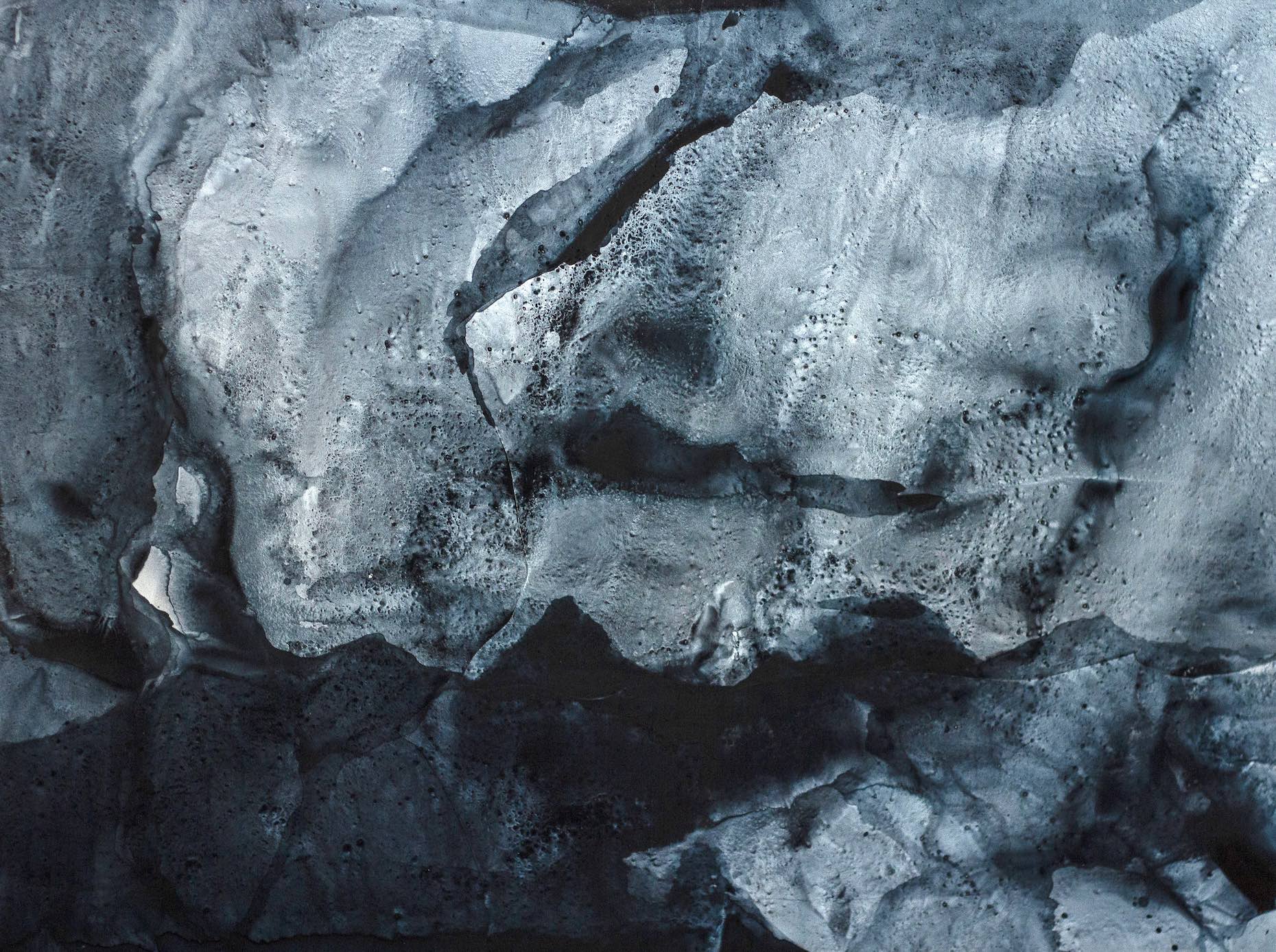
I glance at my phone: we’ve been talking for almost an hour. The chair where I’m sitting feels warm, comfortable. I’ve finished my coffee. What would happen if I moved a little away from the rhetoric, from my contrived and symbolic mind? I leave you with this final, unprecedented** exchange on art, friendship, and positivist nihilism:
AB. I like the audience to know that they already have everything they need to bond with what’s out there in front of them. Many times people who are outside the art are afraid of not being educated or prepared enough to relate to it. In that sense, I like the possibility of art that’s gentle, of art that says: “This experience that you’re having is enough.”
SO. If I wrote a manifesto I would call it For a Generous Art. What I like the most is sensual and sensory art, art that’s presented with all the information that’s necessary for those who are viewing it. And then it tends to be beautiful—and, for that reason, punished.
AB. They call it decorative (she takes out a fabric and wraps it). I want a dress like this! But it’s as if the fabrics lose substance at the moment they’re worn on the body, when it would be so interesting to expand the painting like this, towards the body. Fashion is super-punished: it’s considered superficial and banal—it’s easy to classify it as minor.
SO. Yes, as if the beautiful and the intimate were inherently suspicious. Before, making beautiful art caused me a lot of conflict.
AB. One has to relax!
SO. Relax a fuckton!
AB. The truth doesn’t matter that much. Why not find meaning in intimacy? The world’s a shithouse; we have ideals of what should be—success, relevance—that we’ve dragged along without questioning. But there are many answers when you go back to simplicity, to enjoyment, to doing things because you want to do them.
SO. Oh! I’ve spent so much time worrying about things that have had no relevance in my life. I see my students having a terrible time, all for a grade that won’t matter: they bring out my endearment. Do you think that in 30 years we’ll turn to look at ourselves and feel the same: endearment?
AB. Sure, sure, yes! I think about it now, when I make decisions that will lead to one side or the other. I wonder where to take them from. Sometimes I try to think of professional strategies, but in the end what interests me most is who I’m going to: who is going to surround me? It seems to me much richer to build up from there, from friendship, even if it’s the biggest professional mistake of my life.
And let it be recorded here, oh muses!, a north for Andrea and for all. Let us remember to choose our friends above professional strategy, the earth above plastic, and pleasure above duty.
Translated to English by Byron Davies
*:From the text written by Antonia Alarcón.
**: Lie: nothing in this is unprecedented.
Published on March 31 2022